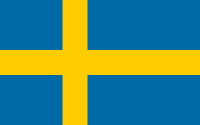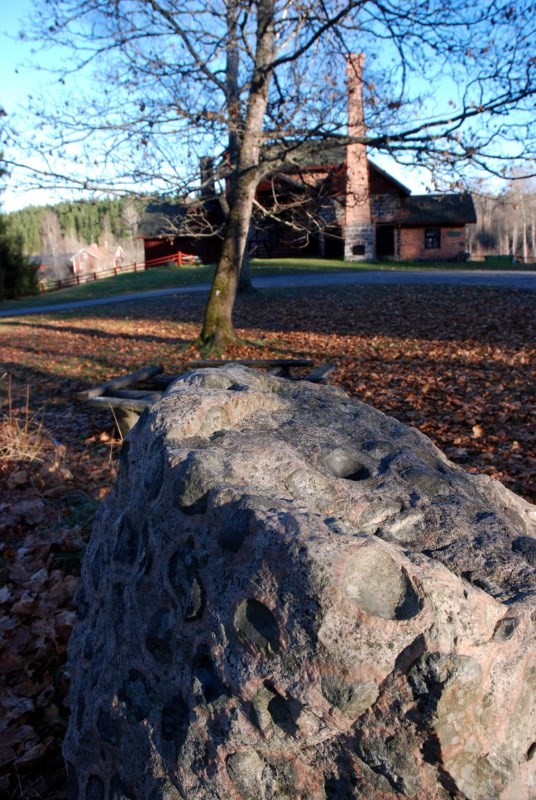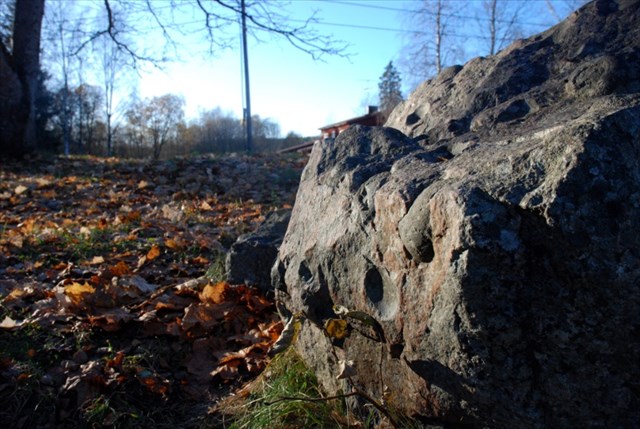 SVENSKA
SVENSKA
Stenkul med kulsten!
Geologi
Bergarter kan delas upp i tre olika huvudtyper beroende på hur de har bildats:
- Magmatiska - bildas genom att magma tränger upp genom jordskorpan och stelnar.
- Sedimentära - bildas genom att material faller ner på havets botten och under årmiljonerna bygger på lager efter lager.
- Metamorfa - bildas genom att någon av de två andra omvandlas vid höga tryck och temperaturer på stora djup i jordskorpan.
De magmatiska bergarterna kan i sin tur delas upp i två undertyper:
- Extrusiva - bildas genom vulkanutbrott
- Intrusiva - bildas genom att magma tränger upp i sprickor i befintlig berggrund
De intrusiva bergarterna omges av redan befintlig berggrund och eftersom de inte exponeras på jordens yta kommer de att stelna långsamt. Detta leder i sin tur gör att de blir grovkorniga till sin struktur eftersom kristallerna har hunnit växa till under lång tid. Kornen kan oftast ses med blotta ögat utan behov av lupp eller mikroskop.
Granit är alltså en sådan intrusiv magmatisk bergart. Granit innehåller mineral som är rika på kiseldioxid (SiO2) som tex fältspat och kvarts men även mineral med aluminiumoxid (Al2O3) är vanliga.
Granit är nästan alltid massiv utan inre struktur (tex sprickor). Den har hög tryckhållfasthet (>200 MPa) och är slitstark vilket har gjort att granit ofta används som konstruktionsmaterial. Graniten kan variera betydligt i kulör, den kan tex vara vit, röd eller svart.

Olika typer av granit
Klotgranit
Klotgranit är en speciell form av granit som är tämligen ovanlig, den har bara hittats på en handfull ställen i sverige. En annan plats är Slättemossa i Hultsfred där berggrunden med klotgranit är synlig.
Kloten består av granit med ett överdrag av ett eller flera skikt av kalknatron eller hornblände och ligger inbäddade i en massa av "vanlig" granit.
Hur klotgranit och dylika bergarter bildats är en öppen fråga där det finns fler funderingar än antalet forskare som funderat (orsaken är att forskare ändrat sig).
Historik för det här stenblocket
Vid Kortfors järnvägsstation tjänstgjorde stationsinspektoren A W Sköldberg i slutet av 1800-talet. En sommar fann han "nära Kortfors jernvägsstation i Karlskoga socken ett enstaka block af en egendomlig bergart, av hvilken han med högst berömvärdt nit insände ett prof till Sveriges Geologiska Undersökning"
Blocket låg på en sandbädd och "bergartens fasta klyft eller flere block av densamma har hr S trots ifrigt sökande i trakten icke lyckats finna", dvs det lösa blocket som hittades den sommaren i slutet av 1800-talet är det enda som har hittats av klotgraniten i området. Varifrån den kommer vet man inte än i denna dag.
Graniten vid stenens fyndplats i Kortfors är ca 1.8 miljarder år gammal och jordarten består av isälvssediment. Eftersom fyndplatsen består av isälvssediment är det inte alls osannolikt att blocket har transporterats av inlandsisen långa sträckor från den plats där det ursprungligen kommer ifrån.
Blocket flyttades till Granbergsdal för några år sen av Granbergsdals byalag.
Loggningskrav
För att få logga denna Earthcache måste du skicka svaren på följande frågor till cacheägaren, däremot behöver du inte invänta godkännande för att logga cachen. Behöver jag kompletterande uppgifter så hör jag av mig.
- Vad är din egen teori hur klotgranit bildas?
- Hur många synliga gropar efter klot som har trillat loss finns på stenblocket?
- På hur många platser i Sverige har klotgranit hittats (enligt informationstavlan)?
- Vilket år hittades just det här blocket med klotgranit i Kortfors?
Frivillig bonusuppgift: ladda upp ett foto på dig själv framför klotgranitblocket.
 ENGLISH
ENGLISH
Geology
The rock can be divided into three main types depending on how they are formed:
- Igneous - formed when magma seeps up through the crust and solidifies.
- Sedimentary - formed by material falling down on the ocean floor, and over millions of years forming layer after layer.
- Metamorphic - formed by either of the other two transformed at high pressure and temperature deep in the Earth's crust.
The igneous rocks can in turn be divided into two subtypes:
- Extrusive - formed by volcanic eruptions
- Intrusive - formed by magma penetrates into cracks in existing rocks
The intrusive rocks is surrounded by existing rock and since they are not exposed on the surface of the earth, they will solidify slowly. This leads to a coarse structure as the crystals have had time to grow for a long time. The granules can usually be seen by the naked eye without the need for magnifying glass or microscope.
Granite is therefore such an intrusive igneous rock. Granite contains minerals that are rich in silicon dioxide (SiO2) as eg feldspar and quartz, but also minerals with aluminum oxide (Al2O3) are common.
Granite is nearly always massive without internal structure (eg cracks). It has high compressive strength (> 200 MPa) and is durable. Granite is because of this often used as a construction material. Granite can vary considerably in color, it can be found in tones of white, red or black.
Orbicular Granite
Orbicular granite is a special form of granite that is relatively rare, it has only been found in a few places in Sweden. One place is Slättemossa in Hultsfred there the bedrock with orbicular granite can be seen.
The orbicules consist of granite with a coating of one or more layers of lime-natron or hornblende, and are embedded in a mass of "ordinary" granite.
How orbicular granite and similar rocks are formed is an open question where there are more ideas than the number of scientists who have thought about it (the reason is that scientists have changed their mind).
The history of this block
In Kortfors railroad station served stationmaster A W Sköldberg the end of the 1800s. One summer, he found "near Kortfors railroad station in Karlskoga parish a single block of a peculiar rock, of which he submitted a sample to the Swedish Geological Survey."
The block lying on a bed of sand and "the solid rock or other blocks of the same kind, Mr. S has despite eagerly searching in the district not been able to find", ie the loose block found that summer at the end of the 1800s, is the only one found of the orbicular granite in the area. From where the block comes, no one knows to this day.
The granite at the place of discovery in Kortfors is about 1.8 billion years old and the soil consists of sediments from a glacial river. Since the soil at the place of discovery consists of glacial river sediments, it is not unlikely that the block has been transported by the glacier a substatial distance from the place of origin.
The block was moved to Granbergsdal a few years ago by the Granbergsdal's village community.
Requirements for logging
Send the answeds for these questions to the cache owner. However, you do not need to wait for approval from the owner to log the cache. If I need additional information, I'll let you know
- What is your own theory as to how the globe granite was formed?
- How many visible pits after spheres that has fallen off can be found on the block?
- In how many places in Sweden has orbicular granite been found (according to the information board)?
- What year was this particular block of orbicular granite found in Kortfors?
Optional bonus task: upload a photo of yourself in front orbicular granite block.
Bilder / Images:


